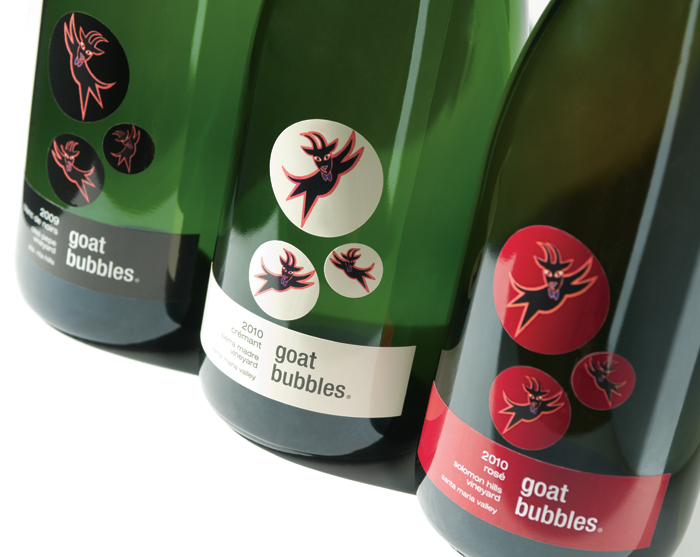It’s that time of year where people blindly purchase champagne brands based on how much money they intend to spend instead of bringing something unexpected, and likely a better deal, to the party.
Champagne — and the ability to be called champagne — officially means the grapes hail from Champagne region of France and are made using méthode champenoise. Champagne production and distribution is highly regulated, which the French credit for its quality, but it also insures a hefty price for champagne. Being an American, one might assume there other ways to obtain quality without the overhead deemed necessary by the French. Plus you’re a discerning individual who wants to broaden your horizons, right?
Well then welcome to the wonderful world of champagne alternatives.
Some of which are fun cheaper alternatives that you’d bring as a starter or possibly bottle #2 after everyone slows in their ability to discern quality over quantity shall we say. Others are frankly just as good if not better without the customary markup that comes with the Champagne label.
The inexpensive
Prosecco and cava hailing from Italy and Spain are both wonderful fun bubbles that can stand out and are typically at a low price point — and food and fun friendly.
- Prosecco is best bought and drank young. Unlike champagne, that is often a combination of several vintages (years) and aged for at least a year and a half, prosecco is fermented in huge tanks and bottled quickly. Producers recommend drinking it young.

Recommended producers:
- La Marca Extra Dry Prosecco di Valdobbiadene, $12 ~ This was one of the fruitiest and one of the most aromatic of the group — marked by notes of melon and citrus. “A good breakfast Prosecco,” said Le Bernardin wine direcctor Aldo Sohm.
- Mionetto Prosecco di Valdobbiadene Frizzante, $15 ~ A traditional prosecco, made Frizzante style (slightly less sparkling than other versions), this Mionetto bottling (it makes several types) is clean, bright and slightly fruity, marked by notes of pear and melon.
- Nino Franco Rustico Prosecco di Valdobbiadene, $15 ~ This clean, bright, fairly light-bodied, and very dry Prosecco is elegance in a glass. It’s as close to Champagne — at this price — as Prosecco will get. A unanimous favorite.
- Enrico Brut Prosecco di Valdobbiadene, $10 ~ The American importer of this wine named it “Enrico” after owner Enrico Martellozzo, although it’s actually made by the well-regarded Bellussi estate. A light, fairly delicate wine with a lovely persistence and a fairly dry finish, it’s a very good value.
- Cavit Lunetta, $10 ~ While the producer of this prosecco is best known for turning out large quantities of basic pinot grigio, this crisp and refreshing prosecco, made in the Trentino region from hand-harvested grapes, is an excellent buy.
- Cava, unlike prosecco, is made using the same method as champagne, meaning the bubbles are a product of fermentation and not CO2 addition. But cava uses blends of Spanish grapes, as opposed to the traditional combinations of pinot noir, pinot meunier, and chardonnay used in France. The traditional native grapes for cava are parellada, macabeo, and xarel-lo.

- La Vida al Camp Reserva Brut ($18) is a deliciously fresh example made from 45% macabeo, 45% xarel-lo, and 10% parellada. It awakens your senses with a citrusy scent and has a lovely tangy savory finish. This wine is more complex than what you get in less expensive versions, and it’s a great option for a fancy holiday dinner party with roast chicken.
- For an unusual take on cava, check out the Oriol Rossell NV Brut Rosé ($15), which is made solely from the trepat grape. This deeply-colored rosé is fuller in flavor and richer in texture than many cavas we’ve tried, yet maintains a remarkable freshness. It has a darker fruit profile of red and blue berries, but is quite zesty. Serve it with your salty and meaty appetizers (think jamon or other cured meats and a big cheese plate).
My personal low price point favorite, and it has been for some time, is Cremant de Bourgogne ever since I was introduced to this lovely (often pink) sparkler at prices as outrageously low as $14 a bottle.
I’d highly advise going into a wine shop and asking the clerk for their favorite one of these — and take the risk for under $20. A widely-available recommendation, Domaine Louis Bouillot Cremant de Bourgogne Rose Perle d’Aurore Brut from Burgundy, France, is a lively fun option with a burst of fruit and a clean finish.
Lastly, it wouldn’t be fair to miss out on the numerous options from California, denoted as sparkling but made using the same method as Champagne.
- My local favorite has to be from Santa Ynez, CA wine maker Norm Yost of Flying Goat and his aptly named Goat Bubbles. These move into the $40 range, but would certainly stand apart from the mindless march of big brand champagne. You can pick from the chardonnay, blanc de Blanc or the pinot noir, blanc de noirs.

- If you love Cristal produced by Louis Roederer, but your wallet doesn’t love the price, California sparkling maker Roederer Estate from the Anderson Valley is here to rescue you. They offer sparkling wine from $23- $70 as options.
Roederer Estate Brut is the first California sparkling wine to be produced by Champagne Louis Roederer, further building upon a 200-year tradition of fine winemaking from this family owned company.
Have fun with your New Year’s selections. May some be inexpensive enough that you find good reasons to celebrate throughout 2014.
Life is too short to drink bad wine.
